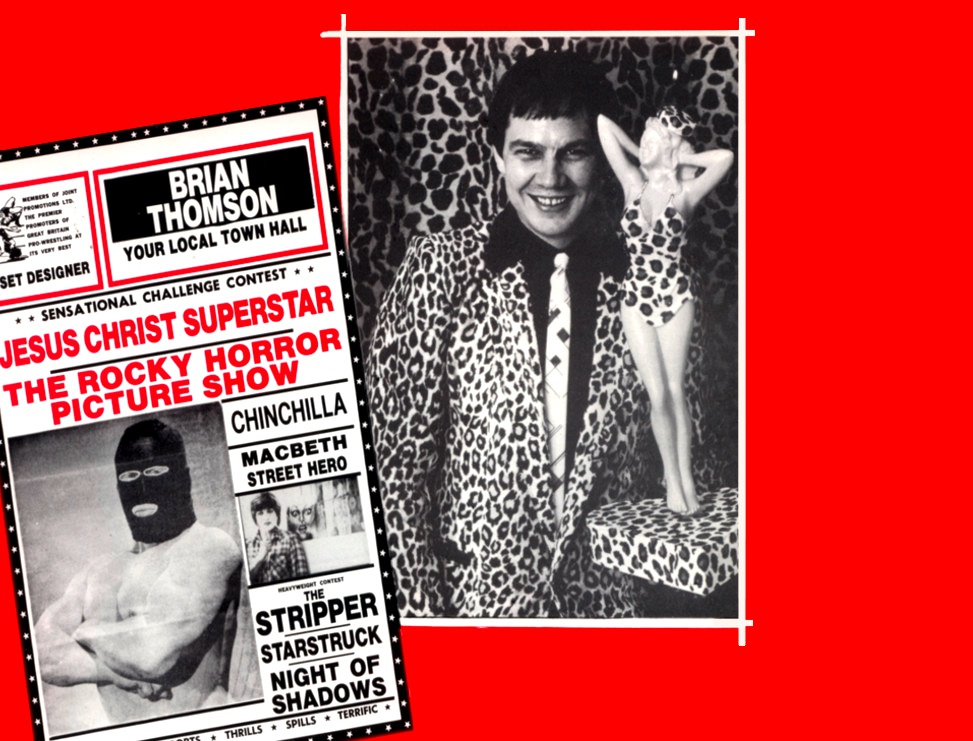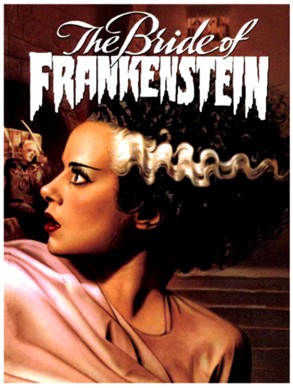

Brian Thomson is Australia's most acclaimed stage designer. Born and educated in Sydney, he studied architecture at UNSW in the late Sixties, and was part of a close circle of friends that included director Jim Sharman. In 1971-72 he designed the original London and Australian productions of the musical Jesus Christ Superstar. His stark and striking design for the Australian stage production set new standards for Australian musical theatre. The centerpiece an hydraulically articulated dodecahedron, had a distant ancestor in the prop Brian designed for the 1967 Architecture Ball, starring The Masters Apprentices. This was a giant dice in which the band were wheeled out into the hall, hidden inside, at which point it exploded open and the band jumped out and began playing. His next major design was for the original London production of The Rocky Horror Show (as well as productions in Los Angeles, Sydney, New York, Oslo and touring productions in the UK, USA, Australia and Japan). "Brian Thomson's blue-canvassed cinema-under-demolition set turned virtually every theatre or old cinema we played in into a tent."(Jim Sharman) "I feel like I still own a piece of that show though I don't get anything [royalties] any more." He shrugs. "Richard formed a company back in the 80s or 90s and completely just cut us out. Look, I say this without any hesitation that Jim Sharman, with help from me, created The Rocky Horror Show to the point that Jim gave it the title." (Brian Thomson) Other musicals include Chicago, Richard O'Brien's The Stripper (which Thomson also directed), Company, Chess and Falsettos, Barry Humphries' Housewife, Superstar!!! in London and New York, Steel City (opening season Sydney Star City Casino, 1998 Australian Tour, 1999 Radio City Music Hall), and Happy Days, the Arena Mega Musical. For producer John Frost and The Adelaide Festival Centre he designed the award-winning settings for The King and I and in 2000 in London's West End (for which he was awarded a 1992 Victorian Green Award), How To Succeed In Business Without Really Trying, South Pacific, Hello, Dolly! and Grease - the arena spectacular. As a production designer for film and television his credits include SHIRLEY THOMPSON VS THE ALIENS (1972), directed by Jim Sharman and produced by Matt Carroll, THE ROCKY HORROR PICTURE SHOW (1975) with Sharman directing; STARSTRUCK, TURTLE BEACH and FRAUDS. He designed and directed the short feature NIGHT OF SHADOWS and received the AFI Best Production Design Awards for REBEL and GROUND ZERO. For television, he designed the mini-series HILLS END', SHADOW OF THE COBRA ( based on Richard Neville’s book about serial killer Charles Sobraj) and BARLOW AND CHAMBERS: A LONG WAY FROM HOME. Opera designs include Death in Venice and The Makropulos Affair for the State Opera of South Australia, Love Burns for the Seymour Group, Aida and Summer Of The Seventeenth Doll for Victorian State Opera, Voss, Summer Of The Seventeenth Doll, Death In Venice, Tristan und Isolde, Katya Kabanova and The Eighth Wonder for the Australian Opera and Billy Budd for the Australian Opera/Welsh National Opera. Brian has designed settings for more productions in the Sydney Opera House than any other designer, and has designed numerous productions for the Sydney Theatre Company and Belvoir Street Theatre. Brian has also designed rock videos for Mental As Anything, The Hoodoo Gurus and Apollonia 6 (a long form video produced by Prince which Brian directed, designed and co-wrote), designed the controversial Bicentenary Birthday Cake and directed and designed the 1991 Australian Film Awards presentation. He also designed Kylie Minogue’s 1998 Australian / UK Tour) Kylie Minogue - Intimate and Live concert. He was supervising designer for the Sydney 2000 Olympic Games closing Ceremony (which used the famous dodecahedron he originally designed for the Sydney production of Superstar) and also designed the medal podiums and was production designer for the 2001 Centenary of Federation ceremony. Among his numerous awards Brian has received the 1989, 1992, 1993 and 1994 Sydney Theatre Critics Circle Awards as Best Designer and the 1994 and 1995 Mo Awards for his Contribution to Musical Theatre. In 1996 he earned Broadway's highest honours for his scenic designs for the acclaimed Broadway revivial of The King and I, winning the 1996 Outer Critic Circle Award, the Drama Desk Award and the 1996 Tony Award. http://www.milesago.com/people/thomson-brian.htm
|
|---|
http://www.rockymusic.org/vinyl/stripper.html
Broadway:
THE ROCKY HORROR SHOW (1975)
HOUSEWIFE SUPERSTAR!! (1977)Film and TV:
SHIRLEY THOMPSON VS THE ALIENS (1972)
THE ROCKY HORROR PICTURE SHOW (1975)
STARSTRUCK
SHOCK TREATMENT
REBEL
GROUND ZERO
TURTLE BEACH
FRAUDS
NIGHT OF SHADOWS
HILLS END
SHADOW OF THE COBRA
BARLOW AND CHAMBERS: A LONG WAY FROM HOMEOpera:
State Opera of South Australia
DEATH IN VENICE
THE MAKROPULOS AFFAIRThe Seymour Group
LOVE BURNSVictorian State Opera
AIDA
SUMMER OF THE SEVENTEENTH DOLLThe Australian Opera
VOSS
SUMMER OF THE SEVENTEENTH DOLL
DEATH IN VENICE
TRISTAN AND ISOLDE
KATYA KABANOVA
THE EIGHTH WONDERAustralian Opera/Welsh National Opera
BILLY BUDDState Opera of South Australia
DEATH IN VENICE
The MAKROPULOS AFFAIRState Theatre Company SA
LULU
SHEPHERD ON THE ROCKS
CROW
London stage:
JESUS CHRIST SUPERSTAR
THE ROCKY HORROR SHOW (original production)
TEE ZEE
Australian stage:
HAIR (1969)
JESUS CHRIST SUPERSTAR (1972)
ROCKY HORROR SHOW (1974)
CHICAGO
COMPANY
CHESS
SOUTH PACIFIC
HOW TO SUCCEED IN BUSINESS WITHOUT REALLY TRYING!
HELLO DOLLY!
Sydney Theatre Company:
THE WHITE DEVIL
AFTER THE BALL
A CHEERY SOUL
MACBETH
THE DOLL TRILOGY
THE HAM FUNERAL
THE CRUCIBLE
UNCLE VANYA
DEATH AND THE MAIDEN
SIX DEGREES OF SEPERATION
THIRD WORLD BLUES
Company B Belvoir
SUDDENLY LAST SUMMER
BURNT PIANO
THE TEMPEST
THE MASTER BUILDER
AFTERSHOCKS
RADIANCE
UP THE ROAD
|
||
|
||
SET VARIATIONS
NORWAY 1977
|



